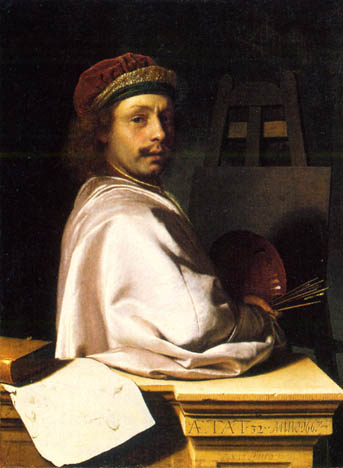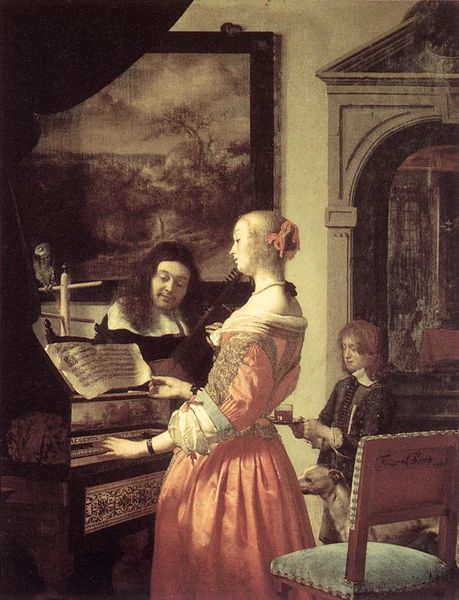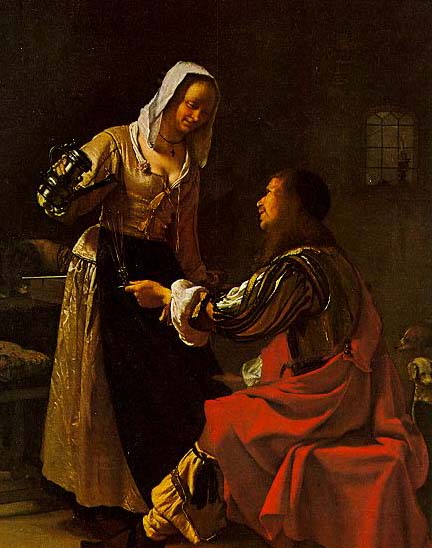Frans van Mieris the Elder (1635-1681)
Get a Frans van Mieris the Elder (1635-1681) Certificate of Authenticity for your painting (COA) for your Frans van Mieris the Elder (1635-1681) drawing.
For all your Frans van Mieris the Elder (1635-1681) artworks you need a Certificate of Authenticity (COA) in order to sell, to insure or to donate for a tax deduction.
Getting a Frans van Mieris the Elder (1635-1681) Certificate of Authenticity (COA) is easy. Just send us photos and dimensions and tell us what you know about the origin or history of your Frans van Mieris the Elder (1635-1681) painting or drawing.
If you want to sell your Frans van Mieris the Elder (1635-1681) painting or drawing use our selling services. We offer Frans van Mieris the Elder (1635-1681) selling help, selling advice, private treaty sales and full brokerage.
We have been authenticating Frans van Mieris the Elder (1635-1681) and issuing certificates of authenticity since 2002. We are recognized Frans van Mieris the Elder (1635-1681) experts and Frans van Mieris the Elder (1635-1681) certified appraisers. We issue COAs and appraisals for all Frans van Mieris the Elder (1635-1681) artworks.
Our Frans van Mieris the Elder (1635-1681) paintings and drawings authentications are accepted and respected worldwide.
Each COA is backed by in-depth research and analysis authentication reports.
The Frans van Mieris the Elder (1635-1681) certificates of authenticity we issue are based on solid, reliable and fully referenced art investigations, authentication research, analytical work and forensic studies.
We are available to examine your Frans van Mieris the Elder (1635-1681) painting or drawing anywhere in the world.
You will generally receive your certificates of authenticity and authentication report within two weeks. Some complicated cases with difficult to research Frans van Mieris the Elder (1635-1681) paintings or drawings take longer.
Our clients include Frans van Mieris the Elder (1635-1681) collectors, investors, tax authorities, insurance adjusters, appraisers, valuers, auctioneers, Federal agencies and many law firms.
We perform Frans van Mieris art authentication, appraisal, certificates of authenticity (COA), analysis, research, scientific tests, full art authentications. We will help you sell your Frans van Mieris or we will sell it for you.

Frans van Mieris, the elder was a Dutch genre and portrait painter. The leading member of a Leiden family of painters, his sons Jan (1660-1690) and Willem (1662-1747) and his grandson Frans van Mieris the Younger (1689-1763) were also accomplished genre painters.

Frans was the son of Jan van Mieris, a goldsmith and diamond setter at Leiden. His father wished to train him to his own business, but Frans preferred drawing to chasing, and took service with Abraham Torenvliet, a glazier who kept a school of design. In his father’s shop he became familiar with the ways and dress of people of distinction. His eye was fascinated in turn by the sheen of jewelry and stained glass; and, though he soon gave up the teaching of Torenvliet for that of Gerard Dou and Abraham van den Tempel, he acquired a manner which had more of the finish of the exquisites of the Dutch school than of the breadth of the disciples of Rembrandt.

It should be borne in mind that he seldom chose panels of which the size exceeded 12 to 15 inches, and whenever his name is attached to a picture above that size we may surely assign it to his son Willem or to some other imitator. Unlike Dou when he first left Rembrandt, or Jan Steen when he started on an independent career, Mieris never ventured to design figures as large as life. Characteristic of his art in its minute proportions is a shiny brightness and metallic polish.

The subjects whom he treated best are those in which he illustrated the habits or actions of the wealthier classes; but he sometimes succeeded in homely incidents and in portrait, and not unfrequently he ventured on allegory. He repeatedly painted the satin skirt which Ter Borch brought into fashion, and he often rivalled Ter Borch in the faithful rendering of rich and highly-coloured woven tissues. But he remained below Ter Borch and Metsu, because he had not their delicate perception of harmony or their charming mellowness of touch and tint, and he fell behind Gerard Dou, because he was hard and had not his feeling for effect by concentrated light and shade. In the form of his composition, which sometimes represents the framework of a window enlivened with greenery, and adorned with bas-reliefs within which figures are seen to the waist, his model is certainly Dou.

It is a question whether Houbraken has truly recorded this master’s birthday. One of his best-known pieces, a party of ladies and gentlemen at an oyster luncheon, in the Hermitage at St Petersburg, bears the date of 1650. Celebrated alike for composition and finish, it would prove that Mieris had reached his prime at the age of fifteen. Another beautiful example, the “Doctor Feeling a Lady’s Pulse” in the gallery of Vienna, is dated 1656; and Waagen, in one of his critical essays, justly observes that it is a remarkable production for a youth of twenty-one. In 1657 Mieris was married at Leiden in the presence of Jan Potheuck, a painter, and this is the earliest written record of his existence on which we can implicitly rely. Of the numerous panels by Mieris, twenty-nine at least are dated–the latest being an allegory, long in the Ruhl collection at Cologne, illustrating what he considered the kindred vices of drinking, smoking and dicing, in the year 1680. Mieris had numerous and distinguished patrons. He received valuable commissions from Archduke Leopold, the elector-palatine, and Cosimo III de’ Medici, grand-duke of Tuscany. His practice was large and lucrative, but never engendered in him either carelessness or neglect. If there be a difference between the painter’s earlier and later work, it is that the former was clearer and more delicate in flesh, whilst the latter was often darker and more livid in the shadows. When he died his clients naturally went over to his son Willem, who in turn bequeathed his painting-room to his son Frans. But neither Willem nor Frans the younger equaled Frans the elder.

Reviews
1,217 global ratings
5 Star
4 Star
3 Star
2 Star
1 Star
Your evaluation is very important to us. Thank you.
